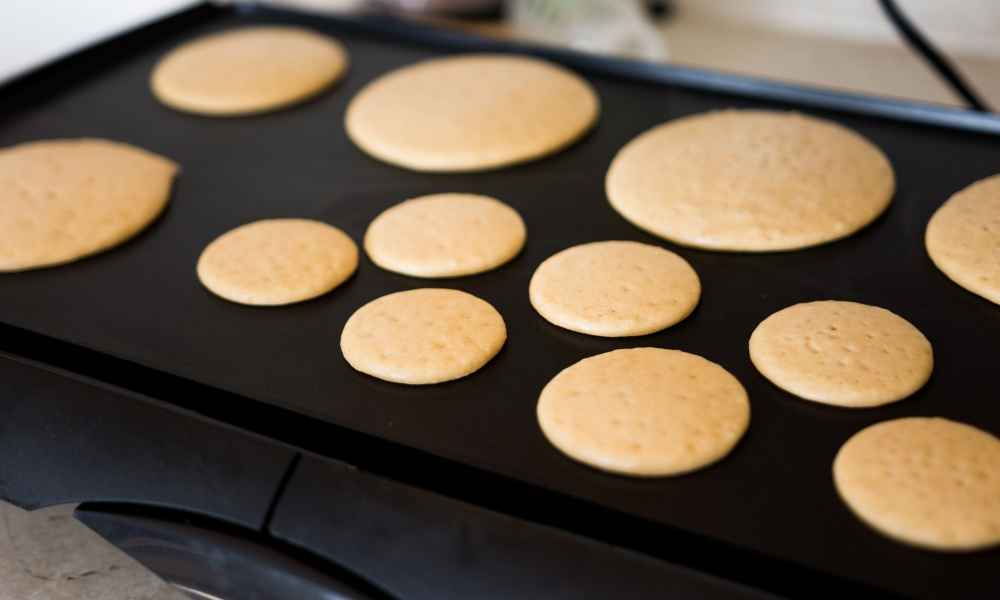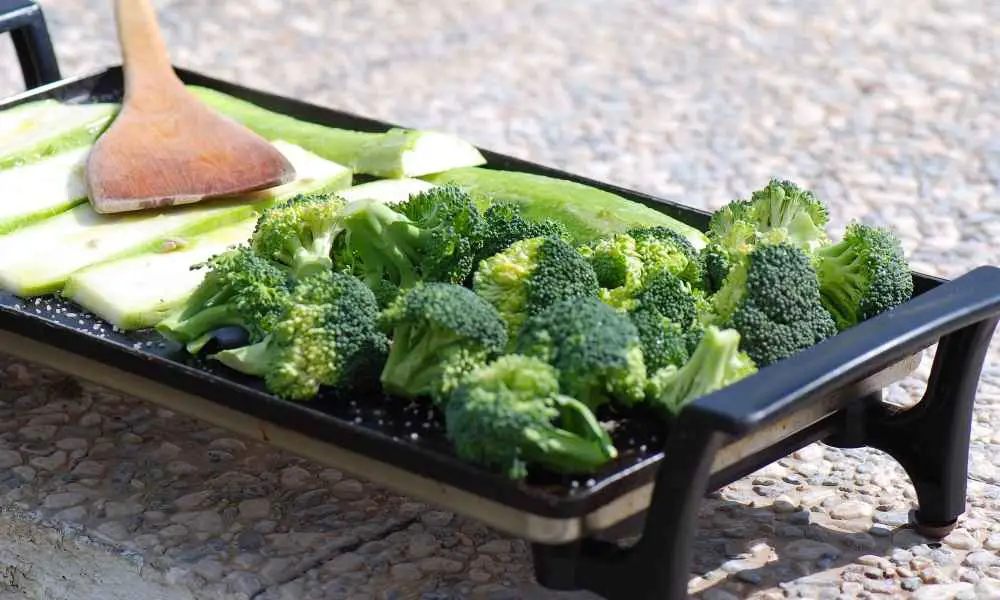If you’re a fan of griddle cooking, then you know that seasoning your griddle is essential to achieving the perfect sear on your food. But, what oil should you use for seasoning your griddle? With so many options available, it can be overwhelming to choose the best one.
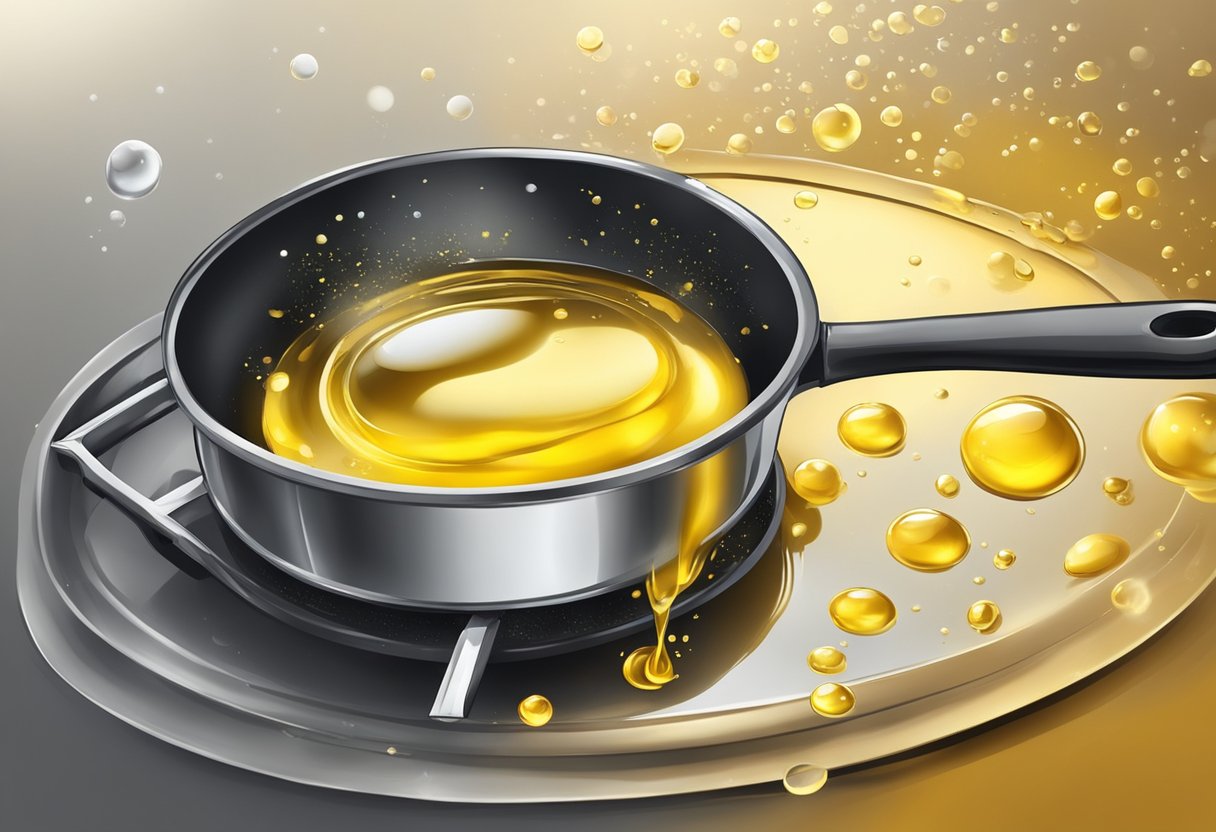
The key property to look for in oil you can use to season your griddle is a high smoke point. This means that the oil won’t burn or smoke at high temperatures, which is important when cooking on a griddle. Some of the best oils for seasoning a griddle include avocado oil, grapeseed oil, canola oil, coconut oil, peanut oil, olive oil, and sunflower oil. Each of these oils has a high smoke point and can be used to achieve a perfect sear on your food.
Choosing the right oil for your griddle can make a big difference in the taste and texture of your food. In this article, we’ll take a closer look at the best oils for seasoning your griddle, as well as some tips for how to properly season your griddle. Whether you’re a seasoned griddle pro or just starting out, this guide will help you achieve the perfect sear every time.
What is Griddle Seasoning Oil
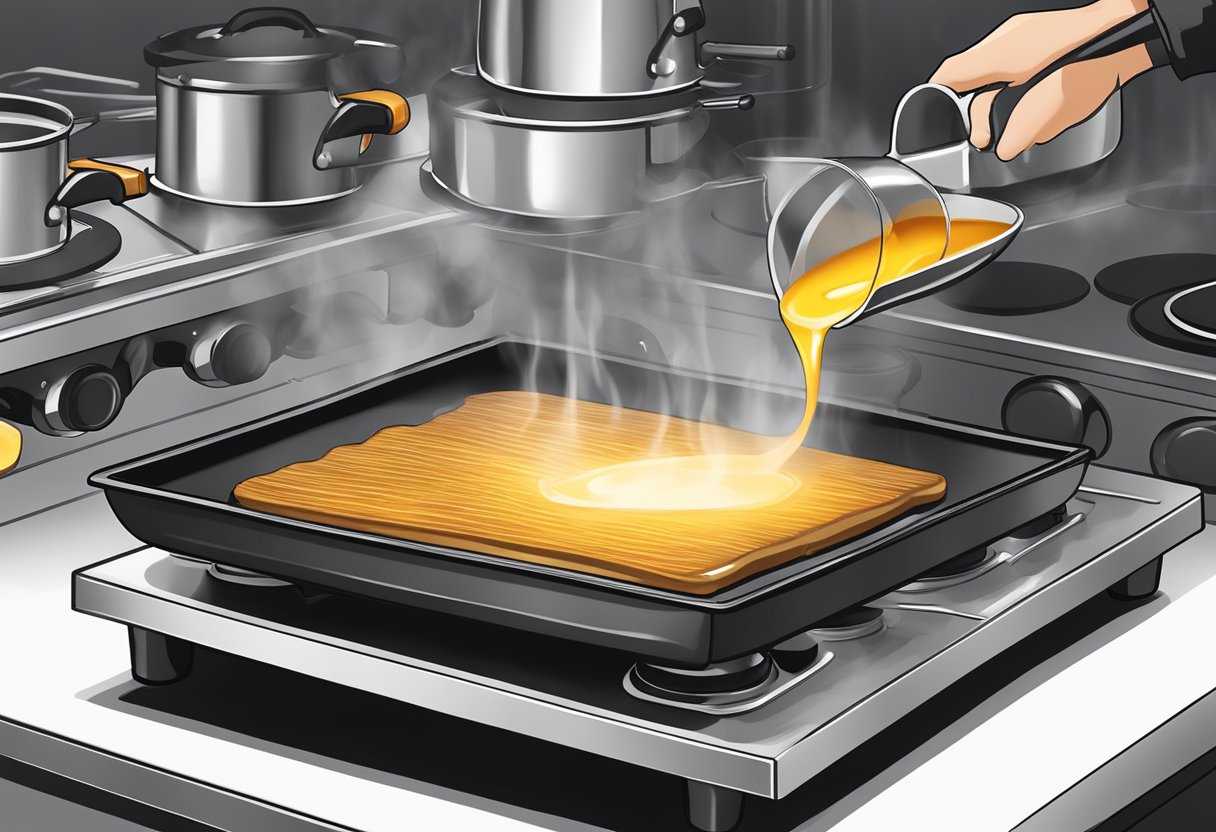
When it comes to cooking on a griddle, seasoning the surface is key to achieving the best results. Seasoning helps to create a non-stick surface, prevents rusting, and adds flavor to your food. Griddle seasoning oil is an essential ingredient in the seasoning process.
Griddle seasoning oil is a type of oil that is used to coat the surface of the griddle. The oil is heated on the griddle until it starts to smoke, creating a layer of polymerized oil that forms a non-stick surface. This process is repeated several times to build up the seasoning layer.
There are many different types of oils that can be used for griddle seasoning. Some of the most popular options include avocado oil, grapeseed oil, canola oil, coconut oil, peanut oil, olive oil, and sunflower oil. Each type of oil has its own unique properties that make it suitable for griddle seasoning.
It’s important to choose an oil with a high smoke point, as this will prevent the oil from burning and creating a bitter taste. Oils with a high smoke point include canola oil, grapeseed oil, and peanut oil. Additionally, oils with a neutral flavor are ideal for griddle seasoning, as they won’t impart any unwanted flavors onto your food. Canola oil and grapeseed oil are both good options for this reason.
In summary, griddle seasoning oil is an essential ingredient in the process of seasoning a griddle. There are many different types of oils that can be used, but it’s important to choose an oil with a high smoke point and a neutral flavor. With the right oil and seasoning technique, you can create a non-stick surface on your griddle that will help you achieve perfect results every time.
Importance of Griddle Seasoning Oil
https://www.youtube.com/watch?v=RvEBaKZ8W-U&embed=true
When it comes to cooking on a griddle, seasoning your cooking surface is important. Seasoning involves coating the griddle with oil and heating it to create a non-stick surface. The oil used for seasoning is just as important as the seasoning process itself.
Using the right oil for seasoning your griddle can make all the difference in the quality of your food. The oil helps to create a non-stick surface, prevent rust, and improve the flavor of your food. Here are some reasons why choosing the right griddle seasoning oil is important:
1. Creates a Non-Stick Surface
The oil used for seasoning creates a non-stick surface on your griddle. This makes it easier to cook food without it sticking to the surface. A non-stick surface also makes it easier to clean your griddle after cooking.
2. Prevents Rust
Griddles are often made of cast iron, which is susceptible to rust. Seasoning your griddle with oil helps to prevent rust from forming on the surface. This is because the oil creates a barrier between the metal and the air, preventing moisture from getting in and causing rust.
3. Improves Flavor
Using the right oil for seasoning can also improve the flavor of your food. The oil helps to create a natural non-stick surface, which allows food to cook evenly and retain its natural flavors. Using a high-quality oil can also add its own flavor to your food, enhancing the overall taste.
When choosing an oil for seasoning your griddle, it’s important to consider the smoke point. The smoke point is the temperature at which the oil begins to smoke and break down. Oils with a low smoke point can create a burnt taste and release harmful fumes.
Some of the best oils for seasoning a griddle include canola oil, grape seed oil, and vegetable oil. These oils have high smoke points and are versatile enough to be used for cooking a variety of foods.
In conclusion, choosing the right oil for seasoning your griddle is important for creating a non-stick surface, preventing rust, and improving the flavor of your food. Consider the smoke point when choosing an oil and opt for high-quality oils like canola or grape seed oil.
Types of Griddle Seasoning Oil
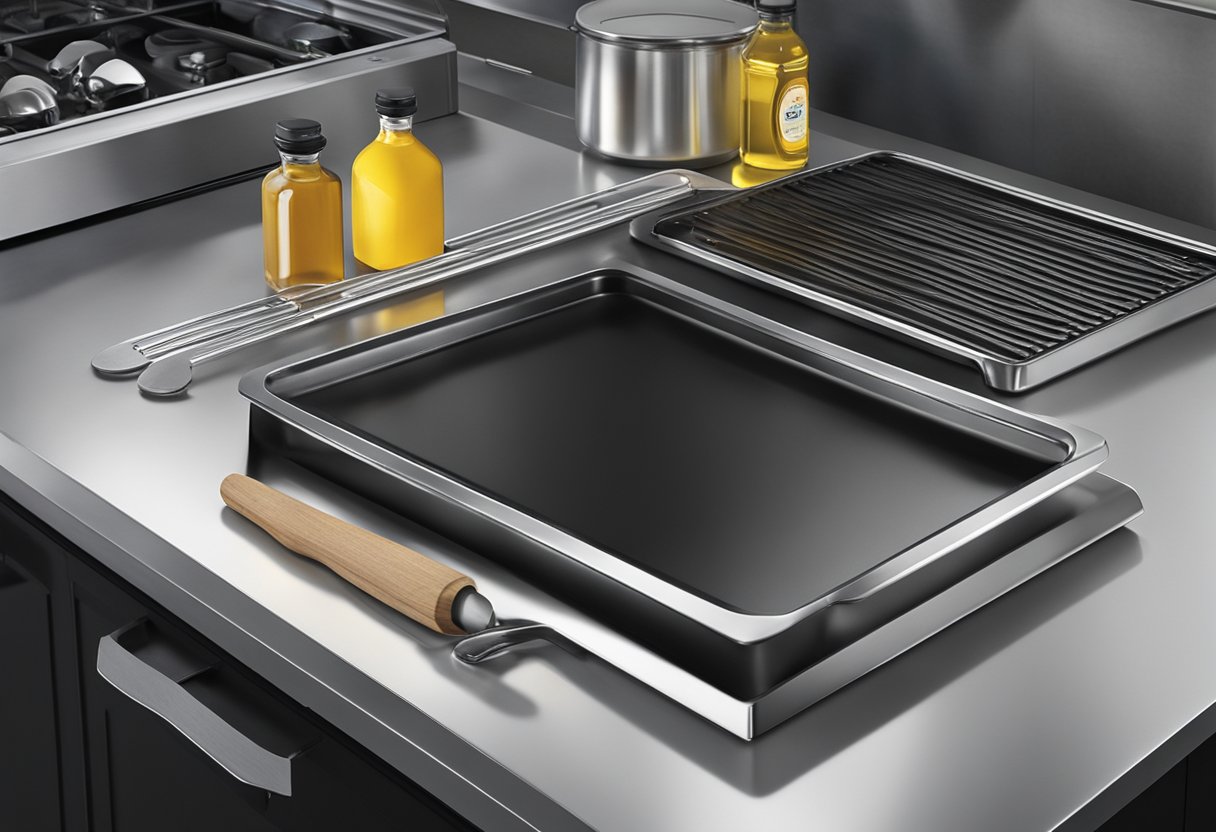
When it comes to seasoning your griddle, choosing the right oil is crucial. There are three main types of griddle seasoning oils: vegetable oils, animal fats, and specialty oils. Each type has its own unique properties and benefits.
Vegetable Oils
Vegetable oils are the most common type of griddle seasoning oil. They are derived from plants and are typically high in unsaturated fats. Some popular vegetable oils for seasoning a griddle include:
- Canola oil: Canola oil is a great all-purpose oil for seasoning a griddle. It has a neutral flavor and a high smoke point, making it ideal for high-heat cooking.
- Avocado oil: Avocado oil is another great option for seasoning your griddle. It has a high smoke point and a mild, buttery flavor.
- Olive oil: Olive oil is a healthy option for seasoning your griddle. It has a low smoke point, so it’s best for low-heat cooking.
Animal Fats
Animal fats are another option for seasoning your griddle. They are typically high in saturated fats and provide a rich, savory flavor. Some popular animal fats for seasoning a griddle include:
- Bacon grease: Bacon grease is a popular choice for seasoning a griddle. It provides a rich, smoky flavor and is ideal for cooking breakfast foods like eggs and pancakes.
- Beef tallow: Beef tallow is another popular choice for seasoning a griddle. It has a high smoke point and provides a rich, beefy flavor.
Specialty Oils
Specialty oils are less common for griddle seasoning, but they can provide unique flavors and benefits. Some popular specialty oils for seasoning a griddle include:
- Coconut oil: Coconut oil is a popular choice for seasoning a griddle because of its sweet, nutty flavor. It has a low smoke point, so it’s best for low-heat cooking.
- Sesame oil: Sesame oil is a flavorful option for seasoning a griddle. It has a nutty, slightly sweet flavor and is ideal for Asian-inspired dishes.
Remember, when choosing a griddle seasoning oil, it’s important to consider the smoke point, flavor, and cooking temperature of the oil. With the right oil and seasoning technique, you can keep your griddle in top condition and enjoy delicious meals for years to come.
How to Choose the Right Griddle Seasoning Oil

When it comes to seasoning your griddle, choosing the right oil is key. The right oil will not only help you create a delicious, flavorful meal, but it will also provide the best non-stick coating. Here are some tips to help you choose the right griddle seasoning oil:
Consider the Smoke Point
The smoke point of an oil is the temperature at which it begins to smoke and break down. When choosing a griddle seasoning oil, it’s important to choose one with a high smoke point. Oils with a low smoke point, such as olive oil or flaxseed oil, are not recommended for seasoning a griddle because they will break down and become rancid at high temperatures.
Look for Neutral Flavors
When seasoning a griddle, you want to choose an oil with a neutral flavor. This will allow the flavor of your food to shine through without any interference from the oil. Canola oil, vegetable oil, and grapeseed oil are all good options for seasoning a griddle because they have a neutral flavor.
Consider Health Benefits
If you’re health-conscious, you may want to consider the health benefits of the oil you choose for seasoning your griddle. Canola oil is a good option because it is lower in saturated fat than other oils, such as coconut oil or peanut oil. However, all oils should be used in moderation as they are high in calories.
Avoid Allergens
If you or anyone in your family has a food allergy, it’s important to choose an oil that is safe for everyone to consume. Peanut oil, for example, is a popular oil for seasoning a griddle, but it should be avoided if anyone in your family has a peanut allergy. Instead, consider using canola oil or vegetable oil, both of which are safe for most people to consume.
Experiment with Different Oils
While canola oil, vegetable oil, and grapeseed oil are all good options for seasoning a griddle, don’t be afraid to experiment with different oils to find the one that works best for you. Avocado oil, coconut oil, and sunflower oil are all popular options for seasoning a griddle, and each one will provide a slightly different flavor and non-stick coating.
How to Apply Griddle Seasoning Oil
https://www.youtube.com/watch?v=RD1jpSXy3C0&embed=true
When it comes to griddle cooking, seasoning your griddle is key to ensuring a non-stick surface and delicious results. Applying griddle seasoning oil is an important step in the seasoning process. In this section, we’ll go over how to apply griddle seasoning oil for both initial and regular seasoning.
Initial Seasoning
Before you start cooking on your griddle, you’ll need to perform an initial seasoning. This process will lay down a protective layer of seasoning oil on the griddle surface.
To apply griddle seasoning oil during the initial seasoning, follow these steps:
- Clean the griddle surface with a damp cloth and mild soap. Rinse and dry thoroughly.
- Apply a thin layer of high smoke point oil, such as avocado oil or grapeseed oil, to the griddle surface.
- Heat the griddle to a high temperature, around 375-400°F, for 30 minutes.
- Turn off the heat and let the griddle cool completely.
- Repeat steps 2-4 for a total of 2-3 rounds of seasoning.
By following these steps, you’ll create a non-stick surface that will make cooking a breeze.
Regular Seasoning
After the initial seasoning, you’ll need to regularly apply seasoning oil to maintain the non-stick surface of your griddle. Here’s how to do it:
- Clean the griddle surface with a damp cloth and mild soap. Rinse and dry thoroughly.
- Apply a thin layer of high smoke point oil, such as avocado oil or grapeseed oil, to the griddle surface.
- Heat the griddle to a high temperature, around 375-400°F, for 10-15 minutes.
- Turn off the heat and let the griddle cool completely.
You should repeat the regular seasoning process every few uses or as needed to maintain the non-stick surface of your griddle.
Remember to always use a high smoke point oil and to apply a thin, even layer of oil to avoid any thick puddles or dry spots. With these tips, you’ll be able to apply griddle seasoning oil like a pro and enjoy delicious meals without the worry of sticking food.
Safety Tips for Using Griddle Seasoning Oil
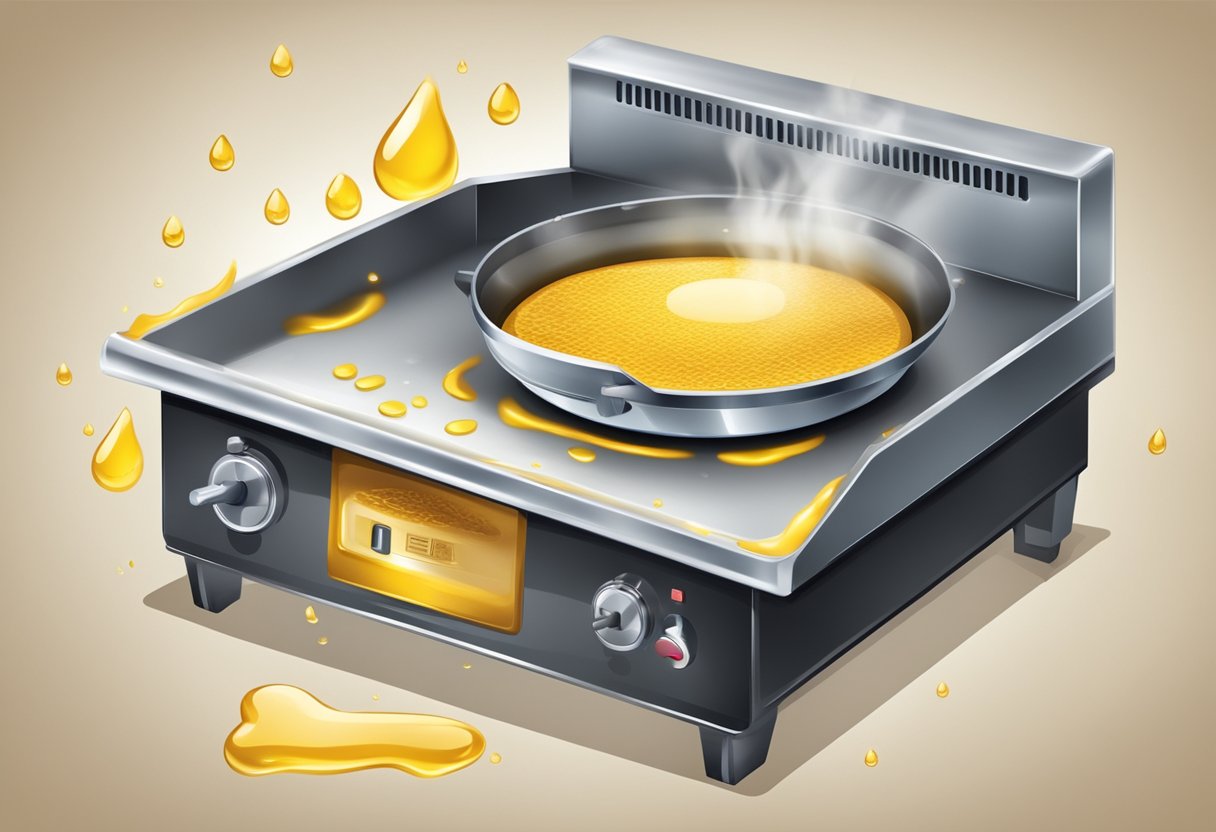
Using oil to season your griddle is an effective way to create a non-stick surface and prevent rust. However, there are some safety tips you should follow to avoid accidents and ensure that your griddle is properly seasoned.
Choose the Right Oil
When selecting an oil for seasoning your griddle, choose one with a high smoke point. This will help prevent the oil from burning and producing harmful smoke. Avocado oil, grapeseed oil, canola oil, coconut oil, peanut oil, olive oil, and sunflower oil are all good choices for griddle seasoning.
Use the Right Amount of Oil
Applying too much oil to your griddle can cause it to smoke excessively and potentially catch fire. Use a small amount of oil and spread it evenly across the surface of the griddle. You can use a paper towel or a brush to apply the oil.
Heat the Griddle Slowly
Before applying the oil, heat the griddle slowly to avoid warping or damaging the surface. Turn the heat up gradually and allow the griddle to heat evenly. Once it reaches the desired temperature, turn off the heat and allow it to cool slightly before applying the oil.
Use Protective Gear
When handling hot oil or a hot griddle, use protective gear such as oven mitts or gloves to avoid burns. Keep a fire extinguisher nearby in case of accidents.
Clean Up Properly
After using your griddle, clean it properly to avoid buildup of excess oil, food particles, and debris. Use a scraper or spatula to remove any food residue, then clean the surface with a damp cloth or sponge. Avoid using soap or harsh chemicals, as they can damage the seasoning on the griddle.
By following these safety tips, you can ensure that your griddle is properly seasoned and safe to use for cooking your favorite meals.
Maintaining the Seasoning on Your Griddle
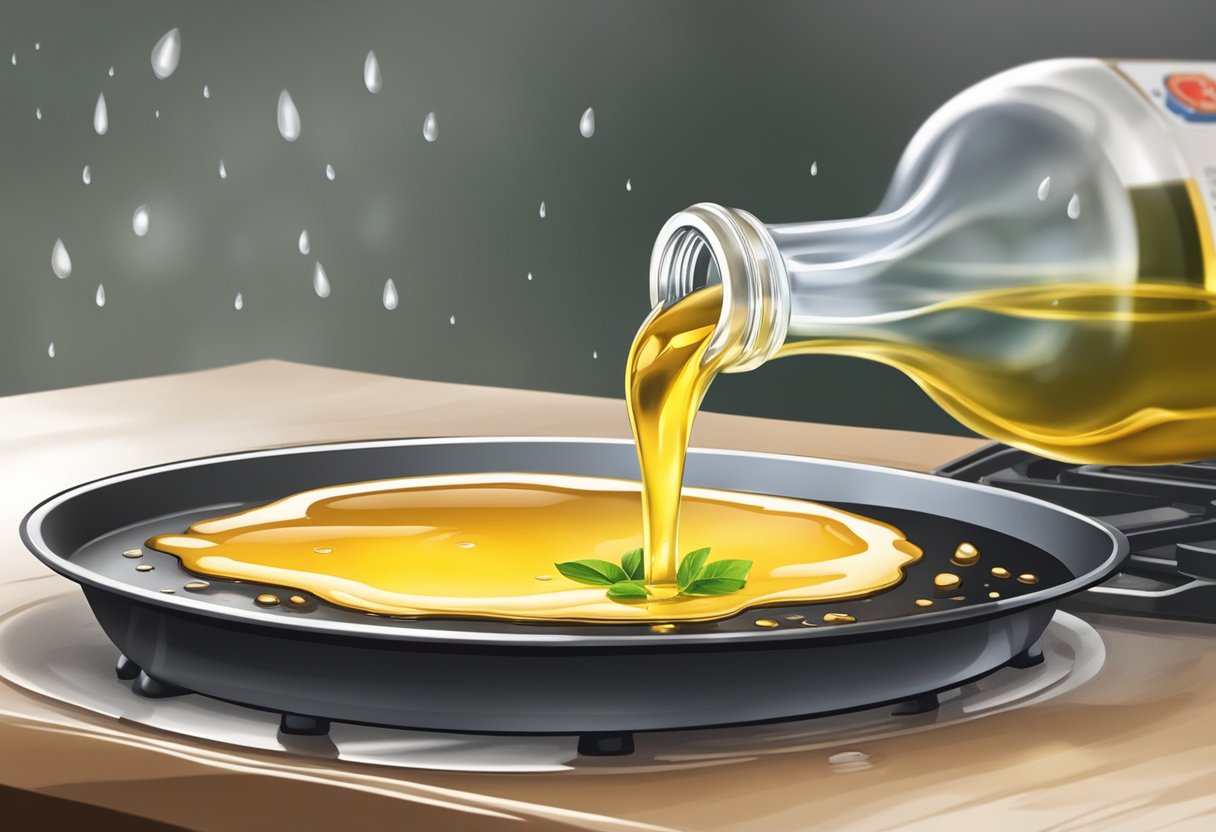
Congratulations on successfully seasoning your griddle! Now that you have a non-stick surface, you need to maintain it. Here are some tips to help you keep your griddle in top condition:
Use the Right Cleaning Techniques
To maintain the seasoning on your griddle, it’s important to avoid using harsh cleaning chemicals or abrasive scrubbers. Instead, use a griddle scouring pad and hot water to scrub the surface. If necessary, you can use a small amount of dish soap to help remove any stubborn residue.
Keep Your Griddle Dry
After cleaning your griddle, be sure to dry it thoroughly with a clean towel. Leaving any moisture on the surface can cause rust and damage the seasoning.
Apply Oil After Each Use
After each use, apply a thin layer of oil to the entire cooking surface, including the edges. This will help protect the seasoning and prevent rust. You can use any of the oils mentioned in our previous section, such as avocado oil, grapeseed oil, or coconut oil.
Store Your Griddle Properly
When not in use, store your griddle in a dry place where it won’t be exposed to moisture or humidity. You can also cover it with a cloth or towel to protect it from dust and debris.
By following these simple tips, you can ensure that your griddle stays in top condition and continues to provide you with delicious, non-stick cooking for years to come.
Common Mistakes to Avoid When Using Griddle Seasoning Oil
https://www.youtube.com/watch?v=ouEdmlkernw&embed=true
When seasoning your griddle, there are common mistakes that you should avoid to achieve the best results. Here are some of the most common mistakes you should avoid when using griddle seasoning oil:
Using a Thick Layer of Oil
One of the most common mistakes when seasoning your griddle is using a thick layer of oil. Applying too much oil can cause sticky patches and potential peeling on the griddle surface. To avoid this, use a thin layer of cooking oil on the griddle surface.
Seasoning with the Wrong Oil
Using the wrong oil for seasoning your griddle can affect the quality of your results. Certain kinds of cooking oil have the right fats and smoke points to improve your results. For instance, using high heat oil like canola, vegetable, or grapeseed oil is ideal for seasoning your griddle.
Neglecting to Clean After Each Use
Neglecting to clean your griddle after each use can cause a buildup of grease and food particles, which can affect the quality of your results. Cleaning your griddle after each use will help keep it in good condition and prolong its lifespan.
Not Heating the Griddle Enough
Not heating the griddle enough before seasoning can cause the seasoning oil to become sticky and ineffective. Before seasoning your griddle, make sure to heat it up to the recommended temperature to achieve the best results.
Applying Seasoning Oil on a Wet Surface
Applying seasoning oil on a wet griddle surface can cause the oil to become ineffective. Make sure to dry your griddle surface thoroughly before applying seasoning oil to achieve the best results.
By avoiding these common mistakes, you can achieve the best results when seasoning your griddle with oil.
Frequently Asked Questions
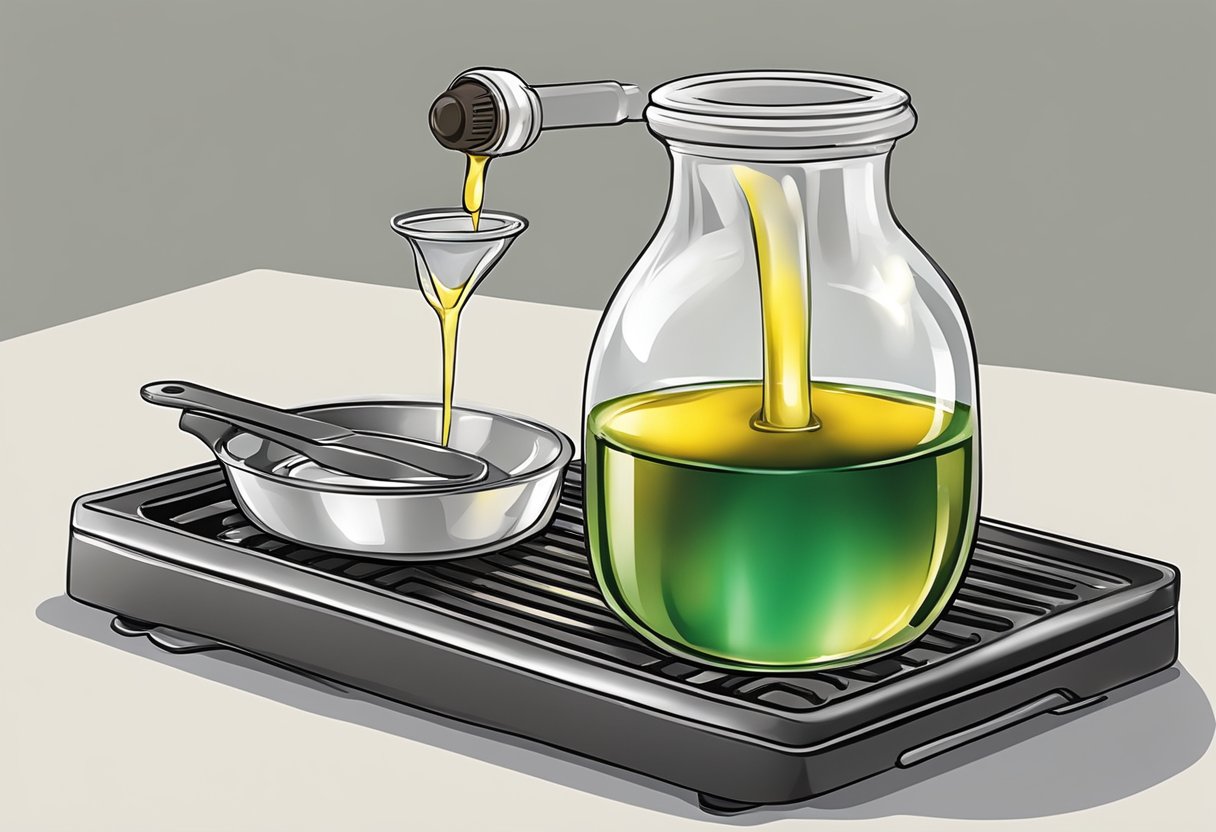
What are some alternatives to vegetable oil for seasoning a griddle?
If you’re looking for alternatives to vegetable oil, you can use canola oil, grapeseed oil, or flaxseed oil. These oils have a high smoke point and are great for seasoning a griddle.
What is the healthiest oil to use for seasoning a griddle?
The healthiest oil to use for seasoning a griddle is one that is high in monounsaturated or polyunsaturated fats, such as avocado oil, olive oil, or sunflower oil. These oils are better for your heart health compared to oils high in saturated fats.
Can avocado oil be used to season a griddle?
Yes, avocado oil is a great choice for seasoning a griddle. It has a high smoke point, making it ideal for high-heat cooking, and it is also rich in healthy fats.
What is the best oil to use for seasoning a Blackstone griddle according to Reddit users?
According to Reddit users, the best oil to use for seasoning a Blackstone griddle is flaxseed oil. It has a high smoke point and creates a durable, non-stick surface on the griddle.
How do you properly season a Blackstone griddle?
To properly season a Blackstone griddle, first, clean the surface thoroughly with soap and water. Then, apply a thin layer of oil to the griddle and heat it up until the oil starts to smoke. Let it cool down and repeat the process several times until the griddle has a shiny, black coating.
What kind of oil should be used to clean a griddle?
To clean a griddle, you can use any oil with a high smoke point, such as vegetable oil or canola oil. Apply the oil to a paper towel and wipe down the surface of the griddle to remove any food debris or residue.

